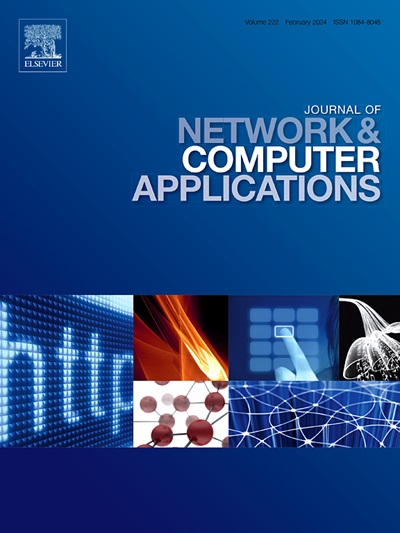基于PPO和GNN的SDN智能路由优化
IF 8
2区 计算机科学
Q1 COMPUTER SCIENCE, HARDWARE & ARCHITECTURE
引用次数: 0
摘要
随着网络规模的不断扩大,各种新兴应用(如视频流)不断涌现,对服务质量(QoS)提出了极低延迟、高带宽、低丢包率等差异化要求。为此,需要一种智能路由方法来满足各种流量QoS需求。然而,现有的路由优化QoS方案要么缺乏QoS性能的保证,要么不能推广到不可见的网络拓扑。针对这一问题,本文创新性地提出了QoS智能路由方法PPO- r,该方法将基于PPO和基于gnn的SDN路由优化相结合。该算法通过设计冗余树算法生成多条不相交的候选路径,在预选路径上推断出接近最优的流量分流比,并根据得到的流量分流比将流量合理分配到不同的路径上。与基准方案DQS相比,在中等网络拓扑german -50下,PPO-R的QoS性能比DQS提高了约10.6%。实验结果表明,PPO-R算法可以获得更好的QoS路由优化结果,消耗较少的计算资源,显著提高QoS路由的鲁棒性和泛化能力。本文章由计算机程序翻译,如有差异,请以英文原文为准。
Intelligent routing optimization for SDN based on PPO and GNN
With the continuous increase of network scale, a variety of emerging applications (e.g., video streaming) continue to emerge, which puts forward differentiated requirements for quality of service (QoS), such as extremely low latency, high bandwidth, low packet loss rate, etc. To this effect, an intelligent routing method is needed to meet various traffic QoS requirements. However, existing routing optimization QoS schemes either lack guaranteed QoS performance or cannot generalize to invisible network topologies. To address the problem, this article innovatively proposes the QoS intelligent routing method PPO-R, which combines PPO and GNN-based routing optimization for SDN. The algorithm generates multiple disjoint candidate paths by designing a redundant tree algorithm, infers the near optimal traffic splitting ratios on the pre-selected path, and reasonably allocates traffic to different paths based on the obtained traffic splitting ratios. Compared to the baseline scheme DQS, in the medium network topology Germany-50, the QoS performance of PPO-R is about 10.6% higher than that of DQS. The experimental results show that the PPO-R algorithm can achieve better QoS routing optimization results, consume less computing resources, and significantly improve the robustness and generalization of QoS routing.
求助全文
通过发布文献求助,成功后即可免费获取论文全文。
去求助
来源期刊

Journal of Network and Computer Applications
工程技术-计算机:跨学科应用
CiteScore
21.50
自引率
3.40%
发文量
142
审稿时长
37 days
期刊介绍:
The Journal of Network and Computer Applications welcomes research contributions, surveys, and notes in all areas relating to computer networks and applications thereof. Sample topics include new design techniques, interesting or novel applications, components or standards; computer networks with tools such as WWW; emerging standards for internet protocols; Wireless networks; Mobile Computing; emerging computing models such as cloud computing, grid computing; applications of networked systems for remote collaboration and telemedicine, etc. The journal is abstracted and indexed in Scopus, Engineering Index, Web of Science, Science Citation Index Expanded and INSPEC.
 求助内容:
求助内容: 应助结果提醒方式:
应助结果提醒方式:


